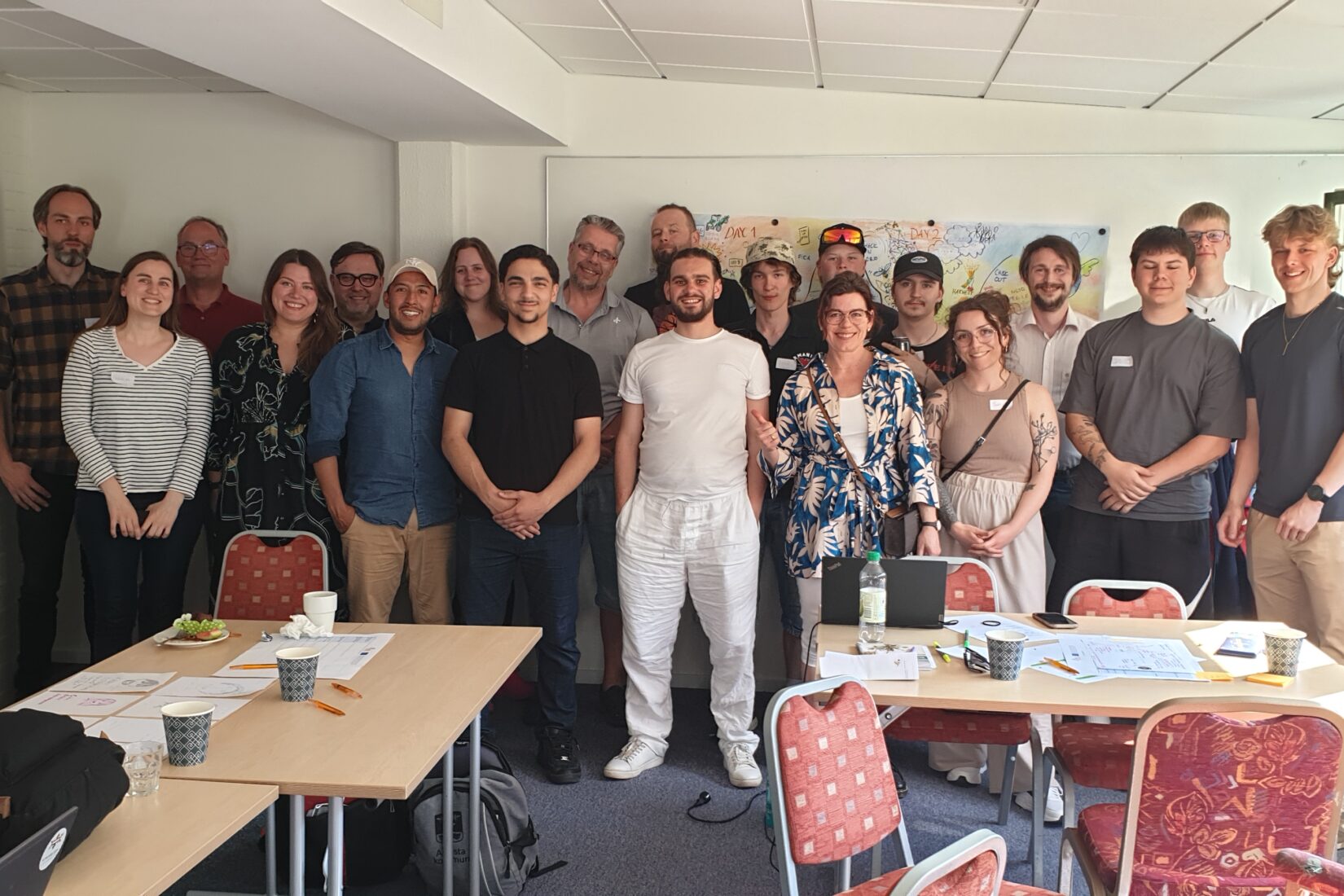Inga Narbutaite Aflaki, PhD in Political Science and lecturer at Karlstad University, was the project leader for Co-Crea Youth:
“The partnership comprised academic actors, municipalities, and civil society organisations from Sweden, Finland, Estonia, and Georgia. This combination of participants was crucial for the success of the project. To achieve greater youth engagement, we employed co-creation methods. Young people are a key group requiring innovative strategies for participation-based decision-making.”
What are co-creation methods?
“Co-creation involves various actors—municipalities, academia, and civil society—working together with young people to develop solutions that encourage youth participation in local decision-making on issues that affect them. Adopting a co-creative approach means involving those affected by an issue at an early stage. Municipalities already have experience with representative approaches and advisory bodies such as youth councils. However, the project also focused on how to reach young people who are becoming disengaged from democracy or lack trust in local institutions, helping them feel empowered to shape their own reality,” explains Inga Narbutaite Aflaki.
Meetings and activities: Experiencing co-creation in practice
The project offered numerous memorable moments, particularly the meetings and workshops involving project partners and young people. It was also inspiring to compare differences and similarities across countries, such as Georgia’s strong civil society-driven initiatives and the municipal leadership seen in Sweden and Finland.
Tools and methods for co-creation
The project used a variety of methods, ranging from dialogue-based workshops to social hackathons and tools that facilitated collaborative reflection and planning. A board game was even employed to help participants understand different roles within the co-creation processes. Co-creation also requires a shift in mindset, balancing power dynamics between project leaders and young participants while ensuring diverse perspectives are heard. Co-creation can lead to redefining prevailing perceptions of reality and problem perspectives.
Results
The project increased knowledge about the significance of co-creation in fostering youth engagement. Municipalities received guidance on how to involve young people and benefit from their ideas, helping to reduce polarisation and strengthen democracy. One key lesson was that resources and local driving forces are essential. In the municipality of Alvesta, Sweden, for example, even small initiatives—such as installing a new basketball hoop—had a significant impact, as long as the young people felt they were being listened to.
Lessons learned: Do’s and don’ts of co-creation
Key lessons included the importance of choosing the right partners and establishing a shared understanding of the project’s objectives. While passionate individuals are invaluable, the project also requires backing from organisational leadership and elected politicians to ensure its sustainability.
Reaching young people outside established structures, such as youth councils, was a challenge that necessitated flexible and creative methods tailored to the target audience. Another challenge has been the municipalities’ lack of resources. Project funding can be seen as a tool to help initiate new democratic co-creation activities.
Next steps: Continuing work in a new project
Following the project’s conclusion, efforts are continuing under a project funded through the EU-program Erasmus. This new initiative will trial co-creation methods in pilot municipalities in Sweden, Finland, and Estonia. In Alvesta, for example, initiatives are being taken to make the municipality more attractive to young people, with concrete themes such as the development of meeting places and recreational activities. In the Finnish municipalities participating in the project, young people are invited to co-create attractive and safe physical environments. The SI project provided a solid foundation upon which the new project aims to build.
Facts
The Co-Crea Youth project received seed funding from SI. A new call for applications will open in December under the SI Baltic Sea Neighbourhood Programme, offering seed funding and funding for cooperation projects.
Join our information seminars on 10 December 2024 and 15 and 28 January 2025 to learn more about the programme. Visit our events page for registration links.
